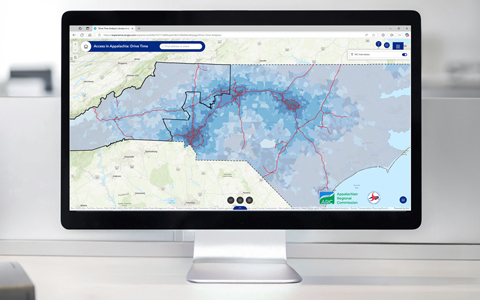
VHB partnered with the North Carolina Department of Transportation (NCDOT) and the Appalachian Regional Commission (ARC) for the Access in Appalachia Pilot Study that evaluated multimodal transportation accessibility in North Carolina. The study assessed how well people and businesses can access transportation and key destinations across the state, using data and metrics to help prioritize transportation projects and aid in policy development. The findings will inform future project prioritization, planning, and policy to address infrastructure improvements, transit enhancements, and connections between modes.
Transportation accessibility, as defined in the report, refers to people’s ability to reach essential activities, services, and goods. VHB’s research focused on identifying areas with the greatest potential for improvement by examining where access is most limited, as well as where community needs are highest. Instead of simply measuring access, the report prioritizes decision-making by using demographic and economic data to highlight communities historically or currently facing transportation and economic disadvantages. The greatest opportunities lie where low access intersects with high community need.
“By improving transportation accessibility across modes through both enhanced infrastructure and more frequent and higher quality services, the region can boost its economic resilience, particularly in rural areas where access to services like healthcare, education, and jobs is more limited,” said Ian Hamilton, VHB Project Manager for the study. “Transportation planners and economic development agencies across the state can use these findings to advance decision-making and prioritize the projects that have the greatest impact in their communities.”
The evaluation included five travel modes—driving (for both people and businesses), fixed-route transit, demand-response transit, biking, and walking— offering tailored solutions for each. Opportunities for improving transportation access and options, particularly for those who need it most, include more frequent and expanded fixed route transit, more scheduling options and service hours for on-demand transit, and better connectivity of comfortable streets for bicyclists and pedestrians. The report helps illustrate where these improvements may have the most impact. The study also introduces a web-based app for comparing access across regions and modes, enabling planners to prioritize multimodal investments in underserved areas. With these findings, North Carolina has a roadmap to building a more inclusive, equitable, and efficient transportation network.
Read the full Access in Appalachia Pilot Study, or connect with Ian Hamilton, AICP, on LinkedIn.


